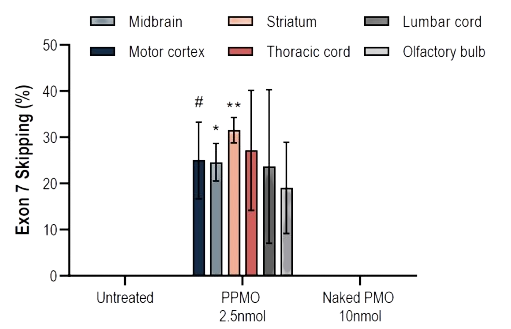PPMO
- PYC’s RNA modality
- Target engagement in all regions of the brain.
PYC-002

Unaffected individual |
PMS PATIENT |
||
|---|---|---|---|
|
|
|
DNA |
PMS patients have a mutation in one copy of the SHANK3 gene |
|
|

|
RNA |
The mutation leads to an unstable RNA message that is rapidly degraded |
|
|

|
SHANK3
|
This leads to neurons having half as much SHANK3 protein as they require to function normally |
100% |
~50% |










2 ‘healthy’ copies of SHANK3 results in functional SHANK3 protein expression










Patients with PMS have a mutation in one copy of the SHANK3 gene causing insufficient level of functional 'healthy' SHANK3 protein expression










PYC-002 increases expression of the remaining 'healthy' copy of SHANK3 to compensate for the SHANK3 protein insufficiency
PYC-002 hit sequences increase SHANK3 protein levels by >2-fold in a neuronal cell line. These increased protein levels are theoretically sufficient to restore gene expression back to wild-type (physiological) levels and therefore holds the potential for a disease-modifying impact in PMS patients. Further studies are underway to confirm this effect in cellular models derived from patients with PMS as well as testing in animal models of the disease.
